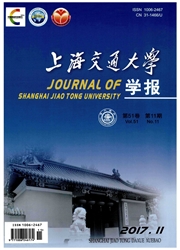

 中文摘要:
中文摘要:
它在肌肉收缩期间绑在肌动朊细丝的分子的马达仍然不是的肌浆球蛋白的动力学清楚地理解。在这份报纸,我们在它和肌动朊的相互作用期间集中于多力量相互作用的联合机制在肌浆球蛋白分子。这些力量与热变化在溶剂在分子的分子的动态模拟包括静电的力量,货车 der Waals 力量和 Casimir 力量。基于 Hamaker 途径,货车 der Waals 和 Casimir 潜力和力量在肌浆球蛋白和肌动朊之间被计算。我们开发了一个蒙特卡罗方法模仿分子的马达的动态活动。当在表面之间的距离比 3 nm 大时,我们证明了因为延迟效果,货车 der Waals 力量掉进 Casimir 力量。当距离比 3 nm 小时,静电的力量和货车 der Waals 强迫增加直到肌浆球蛋白变得属于肌动朊。在在现在的工作学习的距离上,静电的力量统治吸引人的相互作用。我们的计算在对最近的好同意是报导试验性的结果。
 英文摘要:
英文摘要:
The dynamics of the myosin molecular motor as it binds to actin filaments during muscle contraction are still not clearly understood. In this paper, we focus on the coupling mechanism of multi-force interactions in the myosin molecule during its interaction with actin. These forces include the electrostatic force, the van der Waals force and the Casimir force in molecular dynamic simulations of the molecules in solvent with thermal fluctuations, Based on the Hamaker approach, van der Waals and Casimir potentials and forces are calculated between myosin and actin. We have developed a Monte Carlo method to simulate the dynamic activity of the molecular motor. We have shown that because of the retardation effect, the van der Waals force falls into the Casimir force when the distance between the surfaces is larger than 3 nm. When the distance is smaller than 3 nm, the electrostatic force and the van der Waals force increase until the myosin becomes attached to the actin. Over the distances studied in the present work, the electrostatic force dominates the attractive interactions. Our calculations are in good agreement with recently reported experimental results.
 同期刊论文项目
同期刊论文项目
 同项目期刊论文
同项目期刊论文
 Bioelectrochemical control mechanism with variable-frequency regulation for skeletal muscle contract
Bioelectrochemical control mechanism with variable-frequency regulation for skeletal muscle contract A dynamic model of skeletal muscle based on collective behavior of myosin motors-Biomechanics of ske
A dynamic model of skeletal muscle based on collective behavior of myosin motors-Biomechanics of ske SMA-based bionic integration design of self-sensor-actuator-structure for artificial skeletal muscle
SMA-based bionic integration design of self-sensor-actuator-structure for artificial skeletal muscle Differentiated Time-Frequency Characteristics Based Real-Time Motion Decoding for Lower Extremity Re
Differentiated Time-Frequency Characteristics Based Real-Time Motion Decoding for Lower Extremity Re 期刊信息
期刊信息
